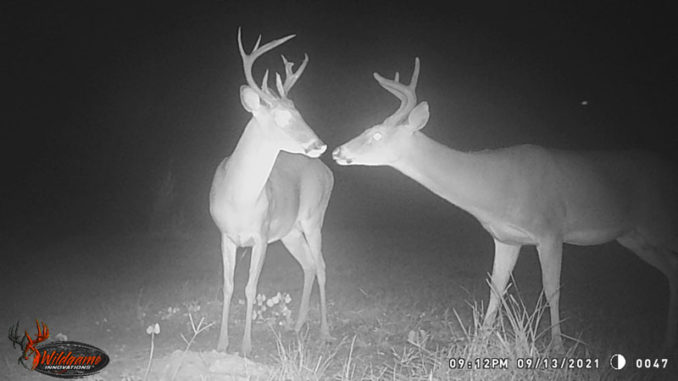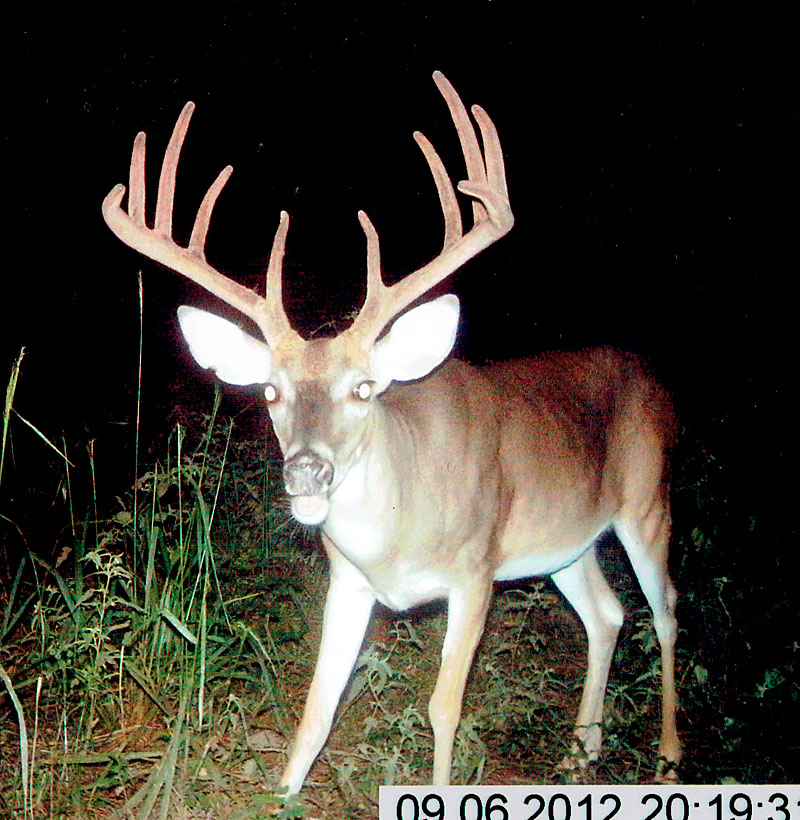
If you have ever watched the MeatEater television program, you have heard Steve Rinella use this terminology.
As the title of the show implies, Rinella likes to hunt, harvest game and eat the meat. When he is out deer-hunting, it generally doesn’t matter what kind of headgear a buck has; he is looking for supper, and a buck with a small rack, particularly a young 1½-year-old, is just fine. Thus, the term “meat buck.”
But there are those occasions when he spies a buck with a nice rack, and he will say those words we all know: “That’s a shooter,” hence a shooter buck. But the meat of that buck with a good rack will wind up on the table. So, one has to ask, is there really a difference?
The trend in deer hunting nowadays is to kill a shooter buck. The infatuation with big racks continues to be an obsession with deer hunters. Because of this, the average age of bucks harvested — not only in Louisiana but across the Southeast — has increased. The harvest of young bucks, 1 ½-year-olds, has dramatically declined from what it was in the 1970s and 1980s. Clubs and landowners are passing up these young bucks with the hopes they get older and bigger.
Of course, the key to this is the nutrition of the habitat, and for the most part, habitat quality has greatly declined across this state. Because of this, a 130-inch buck is a shooter in my book; in fact, the reality is that a 130-inch buck is a top-end buck for most of the habitat in Louisiana.
Would I mount a 130-class buck? No, but on the habitat I hunt, a 130-inch buck is a 4 ½ years or older, and that qualifies as a shooter in my book, regardless of the score.
Trophy potential
Many hunters think that all young bucks have the chance to grow and become trophy class, but that simply is a dream. A recent study from New York that looked at the age of bucks harvested and their Boone & Crockett score pretty much tells the tale of the tape.
In the 1 ½ age class, two-thirds of bucks scored less than 70 B&C, and more than half scored less than 50. In the 2 ½ age class, two-thirds of bucks scored less than 100, and only 7% scored between 120 and 150. In the 3½ and older classes, two-thirds scored less than 120, and only 1% scored 160 or better. If you’re in a club or are a landowner managing for trophy class bucks, 160 or better, your buck harvest is going to be pretty low. Most adult bucks will probably die from disease, an accident or natural mortality.
It is readily apparent that only the top-end bucks in each age class have the potential to become a real shooter buck. The key is to keep good records of your deer harvest and learn to identify those bucks that have this potential, then pass them up while harvesting the low-end bucks in each age class. After you do this, it’s time to really take a close look at your habitat conditions and do the work needed to provide the herd with quality nutrition.
From the New York study, it appears that only about one-third of the bucks in each age class have the potential to become shooters, so why not harvest those low-end bucks, providing more meat bucks for hunters, while lowering your deer density? Of course, you should also keep harvesting does as part of the deer-management program, and this will really keep the herd in balance with the habitat.
Make Hay with the Numbers
In my opinion, the numbers from this New York study are right in line with what happens in Louisiana. In each age class, about one-third would be top-end bucks with good antlers and good body weight. These are the ones that should be passed up and allowed to get older. Of course, it all depends on nutrition, and if the nutrition is not there, desirable body growth and antler development will not happen.
I would suggest that hunters pass up 1 ½-year-old bucks with four to eight points or 6-inch or greater spikes, weighing 125 or better. Yearling bucks with 3-inch or less spikes weighing 100 or less — a friend of mine calls them piney woods goats — are not going to become 130-inch or better bucks. Don’t worry about mistakes; collect the data and learn. Make adjustments to the program as your knowledge of herd growth increases.

In the 2 ½-year age group, I would pass up the good bucks with eight or more points, a 10-inch or greater inside spread, and 14-inch or longer main beams and with good body weights of 150 pounds or better. Everything less would qualify as a meat buck. Hunters need to learn to age deer by body characteristics. Use your trail-camera photos to identify these bucks.
From a quality or trophy standpoint, the 3½-year age group is the group to take a close look at in the field. My suggestion is to pass up 3 1/2-year-old bucks with 10 or more points, 14-inch or better inside spread and 16-inch or longer main beams. These bucks would score 110 to 130, and if you have good nutrition on the landscape, they will have the best chance of growing larger.
For more than 10 years, I worked with the deer herd on a property in Desoto Parish, mixed pine/hardwoods, and during that time, there was only one 3 ½-year-old 10-pointer that scored an estimated 130 and became a true 160-class deer as a 4 1/2-year old. That is why managing for true Boone & Crockett deer is best done in a very controlled situation. It is also why I’m not concerned with shooting 3½-year-old 8-pointers, because most of them simply become 4 ½-year-old 8-pointers the next year.
No old survivors
It is my opinion that all mature bucks 4½ or older should be on the harvest list, regardless of what they look like. But in a very controlled environment — where there is maximum nutrition — those on the high end should grow larger, but the risk of natural mortality is high. Keep the scores of all the mature bucks harvested so you have data showing the quality of bucks your habitat is producing. If it is not what you desire, the chief culprit would probably be nutrition, and that would be the place to start looking first.
This should be a good deer season, and I suspect there are more shooter bucks on the landscape than normal due to the abundant rainfall. But remember, all bucks are meat bucks, so share your harvest with those who have needs.


